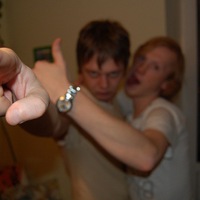Восемь средств Йоги таковы: Заповеди, или Яма; Правила, или Нияма; положение, или Асана; правильный контроль жизненной силы, или Пранаяма; абстрагирование, или Пратьяхара; сосредоточение, или Дхарана; медитация, или Дхьяна; и созерцание, или Самадхи.
Заметим, что эти средства, или практики, кажутся простыми, но следует постоянно помнить, что они относятся не к чему-то совершаемому на том или ином плане в каком-либо из тел, но к одновременной активности и практике перечисленных методов во всех трех телах сразу, так что единый тройственный низший человек практикует средства по отношению к физическому, астральному и ментальному проводникам. Нередко это забывается. Поэтому при изучении различных средств Йоги, или объединения, мы должны рассматривать их в применении к физическому, потом – к эмоциональному и затем – к ментальному человеку. Йогин, например, должен понимать важность правильного дыхания и позы для тройственного выровненного и скоординированного низшего человека, помня, что только тогда, когда телá низшего человека сформируются в согласованный ритмичный инструмент, Эго получит возможность озарять и просветлять его. К примеру, практикуя дыхательные упражнения, стремящийся нередко сосредоточивается на физическом аппарате дыхания, забывая применять аналогичную практику ритмического контроля эмоциональной жизни.
[ 181 ]
Будет полезным, если мы (прежде чем рассмотрим указанные средства по порядку) вначале сведем их в таблицу, давая, по возможности, синонимы:
Средство I.
Заповеди. Яма. Самоконтроль и выдержка. Сдержанность. Воздержание от неправильных действий. Всего пять Заповедей, и они связаны с отношением ученика (чела) к другим людям и к внешнему миру.
Средство II.
Правила. Нияма. Правильное соблюдение предписаний. Правил также пять, и их часто называют «религиозными обетами», поскольку они относятся к внутренней жизни ученика и к той нити, Сутратме, или цепочке, которая соединяет его с Богом, или его Отцом Небесным. Оба средства – пять Заповедей и пять Правил – являются индусскими соответствиями десяти Заповедям Библии и охватывают каждодневную жизнь стремящегося, регулируя как его взаимодействие с окружающим, так и его собственные внутренние реакции.
[ 182 ]
Средство III.
Положение. Асана. Правильное положение тела. Верное отношение. Состояние. Третье средство касается физического положения ученика во время медитации, его эмоционального настроя по отношению к окружающим или его группе и его ментального отношения к идеям, мысленным потокам и абстрактным понятиям. Наконец, практика этих средств координирует и совершенствует низшего тройственного человека таким образом, чтобы три его оболочки смогли образовать совершенный канал для выражения, или манифестации, жизни Духа.
Средство IV.
Правильный контроль жизненной силы.Пранаяма. Задержка дыхания. Регулирование дыхания. Это средство относится к контролю, регулированию и удержанию жизненного флюида, к дыханию и силам, или шакти, тела. В действительности это приводит к такой организации жизненного, или эфирного, тела, что жизненный поток и силы, эманирующие из Эго, или Духовного человека на его собственном плане, могут правильно передаваться физическому человеку в объективном проявлении.
[ 183 ]
Средство V.
Абстрагирование. Пратьяхара. Правильное удаление. Сдерживание. Удаление чувств. Здесь мы от физического и эфирного тел переходим к эмоциональному телу, обители желаний, чувственных восприятий и чувств. Здесь указывается на последовательность метода, которому следуют в поисках Йоги, или объединения. Уделяется внимание жизни физического плана, внешней и внутренней, развивается правильное отношение к жизни в ее тройной манифестации. Эфирное тело организуется и контролируется, а астральное тело переориентируется, так как природа желаний подчиняется и Реальный человек постепенно абстрагируется от всех чувственных контактов. Следующие два средства относятся к ментальному телу, а последнее – к Реальному человеку, или Мыслителю.
Средство VI.
Сосредоточение. Дхарана. Концентрация. Фиксация ума. Здесь Мыслитель, Реальный Человек, ставит свой инструмент под контроль. Шестое чувство координируется, осознается, фокусируется и используется.
Средство VII.
Медитация. Дхьяна. Способность Мыслителя использовать ум согласно желанию и передавать в мозг высшие мысли, абстрактные идеи и идеалистические концепции. Это средство касается высшего и низшего ума.
Средство VIII.
Созерцание. Самадхи. Оно относится к Эго, Реальному человеку, и касается сферы Души. Духовный человек созерцает, изучает и медитирует на мир Причин, на «Божественное». Тогда он, употребляя контролируемый им инструмент, ум (контролируемый благодаря практике сосредоточения и медитации), передает физическому мозгу, через Сутратму, или нить, спускающуюся через три оболочки к мозгу, то, что знает, видит и понимает Душа. Это производит полное просветление.
Алиса Бейли "Свет Души"(комментарий к Йога-Сутрам Патанджали).
Заметим, что эти средства, или практики, кажутся простыми, но следует постоянно помнить, что они относятся не к чему-то совершаемому на том или ином плане в каком-либо из тел, но к одновременной активности и практике перечисленных методов во всех трех телах сразу, так что единый тройственный низший человек практикует средства по отношению к физическому, астральному и ментальному проводникам. Нередко это забывается. Поэтому при изучении различных средств Йоги, или объединения, мы должны рассматривать их в применении к физическому, потом – к эмоциональному и затем – к ментальному человеку. Йогин, например, должен понимать важность правильного дыхания и позы для тройственного выровненного и скоординированного низшего человека, помня, что только тогда, когда телá низшего человека сформируются в согласованный ритмичный инструмент, Эго получит возможность озарять и просветлять его. К примеру, практикуя дыхательные упражнения, стремящийся нередко сосредоточивается на физическом аппарате дыхания, забывая применять аналогичную практику ритмического контроля эмоциональной жизни.
[ 181 ]
Будет полезным, если мы (прежде чем рассмотрим указанные средства по порядку) вначале сведем их в таблицу, давая, по возможности, синонимы:
Средство I.
Заповеди. Яма. Самоконтроль и выдержка. Сдержанность. Воздержание от неправильных действий. Всего пять Заповедей, и они связаны с отношением ученика (чела) к другим людям и к внешнему миру.
Средство II.
Правила. Нияма. Правильное соблюдение предписаний. Правил также пять, и их часто называют «религиозными обетами», поскольку они относятся к внутренней жизни ученика и к той нити, Сутратме, или цепочке, которая соединяет его с Богом, или его Отцом Небесным. Оба средства – пять Заповедей и пять Правил – являются индусскими соответствиями десяти Заповедям Библии и охватывают каждодневную жизнь стремящегося, регулируя как его взаимодействие с окружающим, так и его собственные внутренние реакции.
[ 182 ]
Средство III.
Положение. Асана. Правильное положение тела. Верное отношение. Состояние. Третье средство касается физического положения ученика во время медитации, его эмоционального настроя по отношению к окружающим или его группе и его ментального отношения к идеям, мысленным потокам и абстрактным понятиям. Наконец, практика этих средств координирует и совершенствует низшего тройственного человека таким образом, чтобы три его оболочки смогли образовать совершенный канал для выражения, или манифестации, жизни Духа.
Средство IV.
Правильный контроль жизненной силы.Пранаяма. Задержка дыхания. Регулирование дыхания. Это средство относится к контролю, регулированию и удержанию жизненного флюида, к дыханию и силам, или шакти, тела. В действительности это приводит к такой организации жизненного, или эфирного, тела, что жизненный поток и силы, эманирующие из Эго, или Духовного человека на его собственном плане, могут правильно передаваться физическому человеку в объективном проявлении.
[ 183 ]
Средство V.
Абстрагирование. Пратьяхара. Правильное удаление. Сдерживание. Удаление чувств. Здесь мы от физического и эфирного тел переходим к эмоциональному телу, обители желаний, чувственных восприятий и чувств. Здесь указывается на последовательность метода, которому следуют в поисках Йоги, или объединения. Уделяется внимание жизни физического плана, внешней и внутренней, развивается правильное отношение к жизни в ее тройной манифестации. Эфирное тело организуется и контролируется, а астральное тело переориентируется, так как природа желаний подчиняется и Реальный человек постепенно абстрагируется от всех чувственных контактов. Следующие два средства относятся к ментальному телу, а последнее – к Реальному человеку, или Мыслителю.
Средство VI.
Сосредоточение. Дхарана. Концентрация. Фиксация ума. Здесь Мыслитель, Реальный Человек, ставит свой инструмент под контроль. Шестое чувство координируется, осознается, фокусируется и используется.
Средство VII.
Медитация. Дхьяна. Способность Мыслителя использовать ум согласно желанию и передавать в мозг высшие мысли, абстрактные идеи и идеалистические концепции. Это средство касается высшего и низшего ума.
Средство VIII.
Созерцание. Самадхи. Оно относится к Эго, Реальному человеку, и касается сферы Души. Духовный человек созерцает, изучает и медитирует на мир Причин, на «Божественное». Тогда он, употребляя контролируемый им инструмент, ум (контролируемый благодаря практике сосредоточения и медитации), передает физическому мозгу, через Сутратму, или нить, спускающуюся через три оболочки к мозгу, то, что знает, видит и понимает Душа. Это производит полное просветление.
Алиса Бейли "Свет Души"(комментарий к Йога-Сутрам Патанджали).
The eight means of Yoga are: Commandments, or Yama; Rules, or Niyama; position, or asana; proper control of vitality, or pranayama; abstraction, or Pratyahara; concentration, or Dharana; meditation, or dhyana; and contemplation, or Samadhi.
Note that these tools, or practices, seem simple, but you should always remember that they do not relate to something being done on one plane or another in any of the bodies, but to the simultaneous activity and practice of these methods in all three bodies immediately, so that a single triple lower man practices means in relation to the physical, astral and mental vehicles. This is often forgotten. Therefore, when studying the various means of Yoga, or unification, we must consider them as applied to the physical, then to the emotional and then to the mental person. The yogi, for example, must understand the importance of proper breathing and posture for the threefold aligned and coordinated lower person, remembering that only when the bodies of the lower person are formed into a coordinated rhythmic instrument, the Ego will be able to illuminate and enlighten it. For example, when practicing breathing exercises, the aspirant often focuses on the physical apparatus of breathing, forgetting to apply a similar practice of rhythmic control of emotional life.
[181]
It will be useful if we (before we consider these tools in order) first bring them to the table, giving, if possible, synonyms:
Means I.
The commandments. Pit. Self-control and endurance. Restraint. Abstinence from wrong actions. There are only five Commandments, and they are related to the attitude of the student (chela) to other people and to the outside world.
Means II.
Rules. Niyama. Proper compliance. There are also five rules, and they are often called “religious vows”, because they relate to the inner life of the disciple and to that thread, Sutratma, or the chain that connects him with God, or his Heavenly Father. Both means - the five Commandments and the five Rules - are the Hindu correspondences of the ten Commandments of the Bible and encompass the aspirant's everyday life, regulating both his interaction with his surroundings and his own internal reactions.
[182]
Means III.
Position. Asana The correct position of the body. The right attitude. Condition. The third remedy concerns the physical position of the student during meditation, his emotional attitude towards others or his group, and his mental attitude to ideas, mental flows, and abstract concepts. Finally, the practice of these means coordinates and improves the lower triple man in such a way that his three shells can form a perfect channel for the expression, or manifestation, of the life of the Spirit.
Means IV.
Proper control of vitality. Pranayama. Breath holding. Breath regulation. This remedy relates to the control, regulation and retention of the vital fluid, to the breathing and strength, or shakti, of the body. In fact, this leads to such an organization of the vital, or etheric, body that the life stream and forces emanating from the Ego or Spiritual person on his own plane can be correctly transferred to the physical person in an objective manifestation.
[183]
Tool V.
Abstraction. Pratyahara. The correct removal. Containment. Removing the senses. Here we move from the physical and etheric bodies to the emotional body, the abode of desires, sensory perceptions and feelings. It indicates the sequence of the method that is followed in the search for Yoga, or unification. Attention is paid to the life of the physical plane, external and internal, the correct attitude to life develops in its triple manifestation. The etheric body is organized and controlled, and the astral body is reoriented, since the nature of desires obeys and the Real person gradually abstracts from all sensory contacts. The following two remedies relate to the mental body, and the latter to the Real person, or Thinker.
Means VI.
Concentration. Dharana. Concentration. Fixation of the mind. Here the Thinker, the Real Man, puts his instrument under control. The sixth sense is coordinated, realized, focused and used.
Means VII.
Meditation. Dhyana. The Thinker’s ability to use the mind as desired and transmit to the brain higher thoughts, abstract ideas, and idealistic concepts. This remedy concerns the higher and lower mind.
Means VIII.
Contemplation. Samadhi It refers to the Ego, the Real person, and concerns the sphere of the Soul. A spiritual person contemplates, studies and meditates on the world of Causes, on the “Divine”. Then, using a tool controlled by him, the mind (controlled through the practice of concentration and meditation) transfers to the physical brain, through the Sutratma, or the thread descending through three shells to the brain, what the Soul knows, sees and understands. This produces complete enlightenment.
Alice Bailey "Light of Soul" (commentary on the Yoga Sutras of Patanjali).
Note that these tools, or practices, seem simple, but you should always remember that they do not relate to something being done on one plane or another in any of the bodies, but to the simultaneous activity and practice of these methods in all three bodies immediately, so that a single triple lower man practices means in relation to the physical, astral and mental vehicles. This is often forgotten. Therefore, when studying the various means of Yoga, or unification, we must consider them as applied to the physical, then to the emotional and then to the mental person. The yogi, for example, must understand the importance of proper breathing and posture for the threefold aligned and coordinated lower person, remembering that only when the bodies of the lower person are formed into a coordinated rhythmic instrument, the Ego will be able to illuminate and enlighten it. For example, when practicing breathing exercises, the aspirant often focuses on the physical apparatus of breathing, forgetting to apply a similar practice of rhythmic control of emotional life.
[181]
It will be useful if we (before we consider these tools in order) first bring them to the table, giving, if possible, synonyms:
Means I.
The commandments. Pit. Self-control and endurance. Restraint. Abstinence from wrong actions. There are only five Commandments, and they are related to the attitude of the student (chela) to other people and to the outside world.
Means II.
Rules. Niyama. Proper compliance. There are also five rules, and they are often called “religious vows”, because they relate to the inner life of the disciple and to that thread, Sutratma, or the chain that connects him with God, or his Heavenly Father. Both means - the five Commandments and the five Rules - are the Hindu correspondences of the ten Commandments of the Bible and encompass the aspirant's everyday life, regulating both his interaction with his surroundings and his own internal reactions.
[182]
Means III.
Position. Asana The correct position of the body. The right attitude. Condition. The third remedy concerns the physical position of the student during meditation, his emotional attitude towards others or his group, and his mental attitude to ideas, mental flows, and abstract concepts. Finally, the practice of these means coordinates and improves the lower triple man in such a way that his three shells can form a perfect channel for the expression, or manifestation, of the life of the Spirit.
Means IV.
Proper control of vitality. Pranayama. Breath holding. Breath regulation. This remedy relates to the control, regulation and retention of the vital fluid, to the breathing and strength, or shakti, of the body. In fact, this leads to such an organization of the vital, or etheric, body that the life stream and forces emanating from the Ego or Spiritual person on his own plane can be correctly transferred to the physical person in an objective manifestation.
[183]
Tool V.
Abstraction. Pratyahara. The correct removal. Containment. Removing the senses. Here we move from the physical and etheric bodies to the emotional body, the abode of desires, sensory perceptions and feelings. It indicates the sequence of the method that is followed in the search for Yoga, or unification. Attention is paid to the life of the physical plane, external and internal, the correct attitude to life develops in its triple manifestation. The etheric body is organized and controlled, and the astral body is reoriented, since the nature of desires obeys and the Real person gradually abstracts from all sensory contacts. The following two remedies relate to the mental body, and the latter to the Real person, or Thinker.
Means VI.
Concentration. Dharana. Concentration. Fixation of the mind. Here the Thinker, the Real Man, puts his instrument under control. The sixth sense is coordinated, realized, focused and used.
Means VII.
Meditation. Dhyana. The Thinker’s ability to use the mind as desired and transmit to the brain higher thoughts, abstract ideas, and idealistic concepts. This remedy concerns the higher and lower mind.
Means VIII.
Contemplation. Samadhi It refers to the Ego, the Real person, and concerns the sphere of the Soul. A spiritual person contemplates, studies and meditates on the world of Causes, on the “Divine”. Then, using a tool controlled by him, the mind (controlled through the practice of concentration and meditation) transfers to the physical brain, through the Sutratma, or the thread descending through three shells to the brain, what the Soul knows, sees and understands. This produces complete enlightenment.
Alice Bailey "Light of Soul" (commentary on the Yoga Sutras of Patanjali).
У записи 5 лайков,
3 репостов.
3 репостов.
Эту запись оставил(а) на своей стене Игорь Новиков






![Юлия Март [Jull Mart] Юлия Март [Jull Mart]](https://pp.userapi.com/c629630/v629630640/485e2/EHeD8klOs-g.jpg)

















